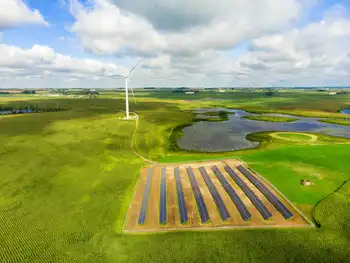Can ConEd avoid blackouts this summer?
The cold air soothes the sweaty, but puts enormous pressure on the electric grid. During the four-day heat wave at the beginning of this month, which broke the June record for peak electricity use two days in a row, the system held up, except for sporadic outages in parts of Brooklyn.
Whether it will all summer remains a question.
"Even though the peak demand will be higher than last year, there should be sufficient reserves and generating capacity for the summer," said Gary Paslow, spokesman for the New York Independent System Operator, which oversees the bulk electric system for the state.
The city has a long history of blackouts. In 1965, the great Northeast blackout left 25 million people in the dark. In 1977, a widespread blackout sparked looting and unrest. Five years ago, a massive power failure left 50 million in the Northeast and Canada in the dark.
Con Ed spokesman Joe Petta said the energy supplier begins to plan for the summer at the end of the previous season by tracking new buildings and increased demand with historical trends and future projections. Since last summer, Con Ed has spent $2 billion and added 10 million feet of cable and 1,700 new transformers as part of an ongoing effort to reinforce the system.
Still, the North American Electric Reliability Corp. determined in its latest annual assessment that increasing demand and limited infrastructure improvements over the long term are still very much a concern.
Part of the challenge is that people keep buying air conditioners. Con Ed estimates that a million air conditioners were installed in the last five years and expects a million more will be installed in the next five years.
The challenge is that there is no way to store electricity. Power must be generated in the city during peak times, causing bottlenecks and sometimes outages.
While the average capacity during the year is around 18,000 megawatts per hour, demand can nearly double on the hottest summer days.
"It's important that the system always has to be prepared to meet the peak even though a lot of times the usage is less," Paslow said.
Peak demand is the year's highest demand for a one-hour period, and generally occurs on a late afternoon several days into a heat wave, when electricity use increases as tolerance for the heat wanes.
On the hottest days, Petta said, Con Ed will have extra crews on standby.
Petta's main advice was to turn off the air conditioner when not at home. If New Yorkers heed those words when the heat comes, the city's lights may stay on this summer.
Related News

From smart meters to big batteries, co-ops emerge as clean grid laboratories
WASHINGTON - Minnesota electric cooperatives have quietly emerged as laboratories for clean grid innovation, outpacing investor-owned utilities on smart meter installations, time-based pricing pilots, and experimental storage solutions.
“Co-ops have innovation in their DNA,” said David Ranallo, a spokesperson for Great River Energy, a generation and distribution cooperative that supplies power to 28 member utilities — making it one of the state’s largest co-op players.
Minnesota farmers helped pioneer the electric co-op model more than a century ago, pooling resources to build power lines, transformers and other equipment to deliver power to rural parts of the state. Today, 44 member-owned electric co-ops…




